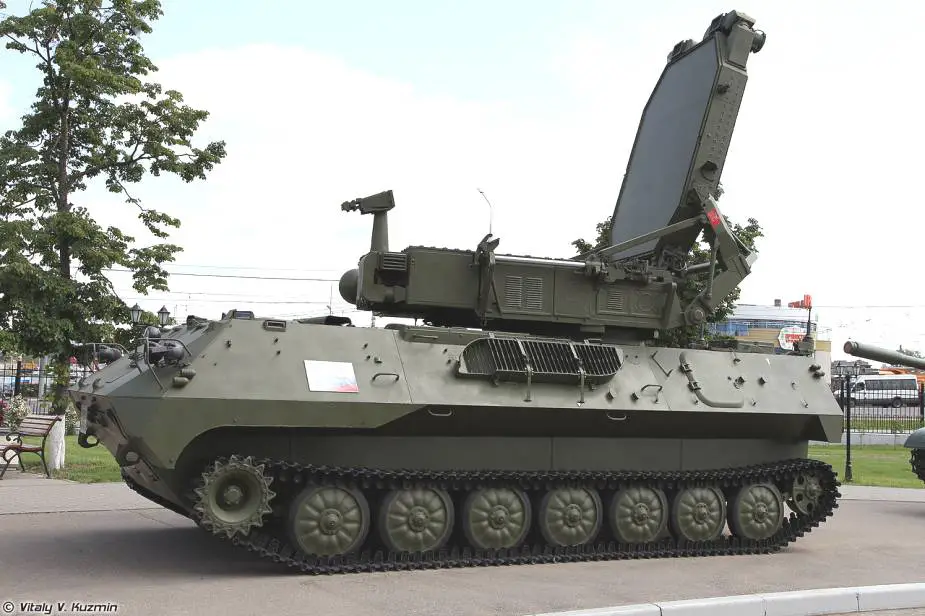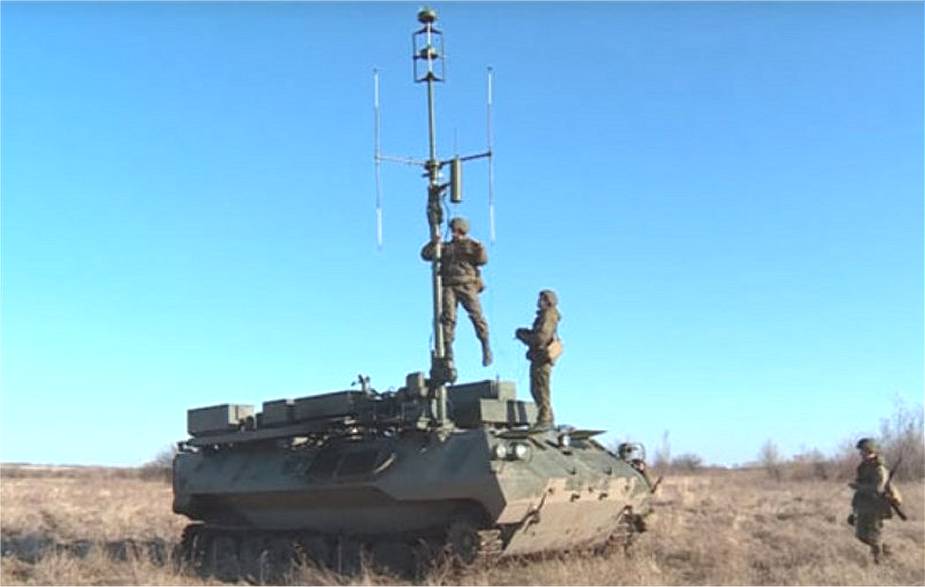- Army
- Conflicts in the world
- Israel - Iran conflict 2025
- Pakistan - India Conflict 2025
- Russia Ukraine War 2022
- Libya conflict day by day
- HAMAS - Israel War 2023
- Operation Serval in Mali French Army
- Sangaris operation Central African Republic
- Sangaris opération militaire République Centreafrique
- Ukraine - Russia conflict
- Syria conflict news
- Defence & Security Industry Technology
- Armies in the world
- Analysis Defense and Security Industry
- Conflicts in the world
- Navy
- Air
Ukrainians destroy crucial Russian Zoopark-1M artillery radar & EW Borisoglebsk-2 vehicles
In a significant victory against Russian forces, the Ukrainian Armed Forces have reportedly destroyed crucial Russian military vehicles including a Zoopark-1 1L219 artillery reconnaissance radar vehicle and a Borisoglebsk-2 electronic warfare vehicle, utilizing precision-guided rockets fired by the M142 HIMARS Multiple Launch Rocket System (MLRS).
Follow Army Recognition on Google News at this link

Ukrainian artillery unit with the help of Special Forces destroy key Russian army counter-battery radar system Zoopark-1 1L219. (Picture source Screen Shot video footage Telegram)
A video shared on Telegram on June 15, 2023, showed the Ukrainian forces targeting and eliminating a Zoopark-1 artillery reconnaissance radar vehicle and a Borisoglebsk-2 electronic warfare vehicle, both critical to the Russian military operations. The vehicles were located near the city of Bakhmut in eastern Ukraine, a region that has seen intense conflict in recent days.
The successful operation was the result of a collaborative effort between artillery units and Ukrainian Special Forces. The Special Forces identified and provided the precise positions of the Zoopark-1 artillery reconnaissance radar complex and the Borisoglebsk-2 electronic warfare station vehicle. Once this crucial information was transferred, the artillery units were able to target and successfully destroy these vehicles using the M142 HIMARS rocket launchers.
The M142 HIMARS is a highly mobile artillery rocket system developed by Lockheed Martin for the United States Army. Known for its accuracy and long range, the use of such technology highlights the increasingly sophisticated tactics employed by the Ukrainian Armed Forces. The HIMARS carries one launch pod containing either six M30 guided rockets or one Army Tactical Missile System (ATACMS) missile.
The M30 Guided Multiple Launch Rocket System (GMLRS), sometimes known as the GMLRS Unitary Rocket, is one of the primary munitions used by the M142 High Mobility Artillery Rocket System (HIMARS).
The M30 rocket is GPS-guided, providing it with a very high degree of accuracy. Its circular error probable (CEP) — a measure of a weapon system's precision — is less than 5 meters under ideal conditions, which means it is capable of striking very close to its intended target with a high degree of reliability.
The rocket is equipped with a unitary warhead, which means it contains a single, large explosive rather than multiple smaller submunitions. The unitary warhead makes the M30 particularly suitable for missions where minimizing collateral damage is a priority, as it provides a single, powerful strike rather than scattering submunitions over a wide area.
The M30 has a maximum range of approximately 70 kilometers (~43.5 miles), although this can vary depending on specific mission parameters and conditions. This long-range, combined with its high accuracy and powerful warhead, makes the M30 a valuable tool for precision strikes against high-value targets, including enemy artillery, command and control centers, and key infrastructure.
The destruction of these vehicles represents a notable setback for the Russian military in the ongoing war in Ukraine. The Zoopark-1 is known to be instrumental in detecting and tracking enemy artillery positions, while the Borisoglebsk-2 is responsible for jamming enemy communications and radar.

Russian army Zoopark-1 1L2019 counter artillery radar system. (Picture source Vitaly Kuzmin)
The Zoopark-1 1L219 is a counter-battery radar system used by the Russian military. Counter-battery radars are a type of radar system that detects artillery projectiles fired by one or more guns, howitzers, mortars, and rocket launchers and calculates the trajectories of these projectiles to determine the location of the enemy artillery.
In the case of the Zoopark-1, it is capable of detecting the location of enemy fire sources and tracking the trajectory of shells. It is also used for adjusting artillery fire. This artillery radar system plays a critical role in modern warfare by improving the accuracy and efficiency of artillery strikes, and by providing key data for counter-battery fire operations.
The Zoopark-1 is capable of detecting artillery within a range of approximately 20 kilometers and rockets within a range of approximately 40 kilometers.

Russian army Electronic warfare complex Borisoglebsk-2. (Picture source Wikimedia)
The Borisoglebsk-2 is a multifunctional electronic warfare system developed and used by the Russian military. This system is designed to disrupt enemy communications and control systems, making it harder for opposing forces to coordinate their actions effectively.
Built on an MT-LBu armored vehicle chassis, the Borisoglebsk-2 combines several different electronic warfare technologies into a single platform. It has capabilities for signals intelligence (SIGINT), allowing it to intercept and analyze enemy communications and radar signals.
It also has electronic attack capabilities, meaning it can jam or disrupt these signals once they have been identified. This disruption can affect a range of systems, from radio communications to GPS signals and radar systems. With a combination of detection and jamming capabilities, the Borisoglebsk-2 can severely hinder an enemy's command and control capabilities.
The Borisoglebsk-2 is typically deployed with other electronic warfare systems as part of a layered defense strategy. It contributes to creating an electronic "fog of war" that can confuse and disorient enemy forces, providing a significant advantage on the modern battlefield. In essence, the Borisoglebsk-2 embodies the increasing significance of electronic warfare in today's military conflicts.


























